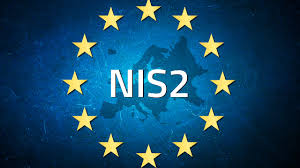 NIS2 Compliance
NIS2 Compliance
The NIS2 Directive is a European Union regulation designed to enhance the cybersecurity of critical infrastructure across member states, expanding the original NIS Directive’s scope to include a broader range of essential sectors. NIS2 compliance is crucial for organizations to strengthen cybersecurity, ensure resilience, and protect against cross-border cyber threats. Here are the fundamental steps to effectively monitor compliance with NIS2:
1. Conduct Comprehensive Cybersecurity Audits
Cybersecurity audits are essential for evaluating an organization’s security posture and identifying gaps in compliance with NIS2 requirements. Regular audits help verify that systems and practices align with the directive, enabling organizations to make adjustments as needed.
2. Develop and Maintain Cybersecurity Policies
Organizations should establish robust cybersecurity policies that adhere to NIS2 standards, covering data protection, access controls, incident response, and network security protocols. These policies should be reviewed and updated regularly to keep pace with evolving cybersecurity threats and regulatory changes.
3. Provide Ongoing Training for Employees
Training programs are critical for ensuring that employees understand NIS2 requirements and can actively contribute to cybersecurity efforts. Regular training sessions should focus on identifying cyber threats, securing sensitive data, and following incident response protocols, fostering a security-focused organizational culture.
4. Conduct Regular Risk Assessments
NIS2 requires organizations to conduct detailed risk assessments to identify vulnerabilities in their critical infrastructure and supply chains. Risk assessments should be performed regularly to ensure that evolving risks are accounted for and appropriate security measures are in place to mitigate them.
5. Implement a Comprehensive Incident Response Plan
Under NIS2, organizations must have an established incident response plan to handle cyber incidents effectively. This plan should include protocols for detecting, reporting, and recovering from security incidents. Regular testing of the plan ensures preparedness and minimizes the impact of potential incidents on critical operations.
6. Ensure Supply Chain Security
NIS2 emphasizes the importance of securing supply chains to prevent vulnerabilities from third-party providers. Organizations should assess and monitor their suppliers’ security practices to ensure compliance with NIS2 standards and mitigate risks associated with external partners.
7. Document Compliance Efforts and Reporting
NIS2 mandates detailed documentation of cybersecurity measures, risk assessments, and incident responses. Organizations must keep accurate records to demonstrate compliance and facilitate transparent reporting to regulatory authorities in case of a cyber incident or audit.
Conclusion
Maintaining NIS2 compliance requires a proactive approach to cybersecurity that involves regular monitoring, employee engagement, and robust risk management. By following these key steps, organizations can strengthen their cybersecurity posture, reduce vulnerabilities, and protect critical infrastructure in alignment with NIS2 standards.

 NIS2 Compliance
NIS2 Compliance